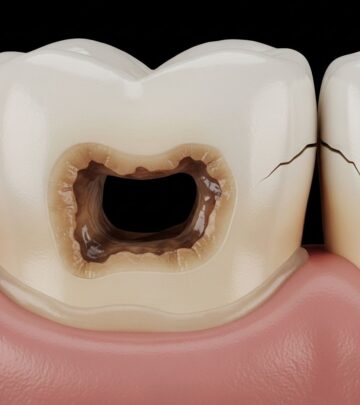13 Dehumidifier Mistakes That Ruin Indoor Air—And How to Avoid Them
Discover and prevent the most common dehumidifier mistakes to keep your home's air fresh, healthy, and moisture-free all year round.

Dehumidifiers are one of the most powerful tools for maintaining healthy indoor air, preventing underlying moisture problems, and protecting your home’s structural integrity. Yet, improper use or neglect can turn them from a solution into a hidden source of trouble. From incorrect placement to overlooked maintenance, everyday errors could be compromising both efficiency and your family’s health. This guide explores the top mistakes people make with dehumidifiers, with actionable fixes and expert advice.
Why Dehumidifiers Matter—And Why Usage Errors Are So Common
Humidity control does more than just keep you comfortable: it safeguards against mold, mildew, dust mites, and even allergic reactions. Yet many users assume that simply switching the unit on will solve all problems . In reality, a handful of avoidable mistakes can greatly reduce a dehumidifier’s effectiveness. Knowing what to watch for and how to avoid common pitfalls is crucial to keeping your home safe and air quality optimal .
13 Common Dehumidifier Mistakes
Below are the most frequent dehumidifier mistakes as identified by home and air quality experts, along with easy prevention strategies.
- 1. Putting It the Wrong Way Round: Many users don’t realize that the direction the dehumidifier faces affects air intake and output. The correct orientation allows optimal airflow and maximum moisture removal. Placing the controls and intake in an obstructed direction or against the wall greatly reduces efficiency .
- 2. Neglecting to Clean or Change the Filter: Dust and allergens will quickly clog a filter, forcing the unit to work harder or not at all. Dirty filters mean the appliance can’t sufficiently purify the air or extract moisture. Clean your filter every few weeks—or more often in dusty environments .
- 3. Putting It in the Wrong Place: Dehumidifiers struggle when placed in corners, behind furniture, or near walls. Such placement restricts air circulation, inhibits performance, and can lead to uneven humidity levels across the room. For best results, position your unit centrally with ample space around it, ideally in the room’s most humid area .
- 4. Assuming Drying Clothes Naturally Is Cheapest: Many believe that air-drying clothes indoors is most cost-effective, but the rising humidity from wet laundry can fuel mold and condensation problems. A dehumidifier not only dries clothes faster but also prevents excess moisture build-up inside the home .
- 5. Neglecting to Empty the Water Reservoir: Forgetting to check and empty the tank can lead to overflow, shutdowns, or a unit that stops functioning. Modern models may shut off automatically when full, but regular monitoring prevents water damage and bacterial growth inside the tank .
- 6. Not Setting the Humidistat Correctly: Humidistats allow you to choose your desired humidity level. If set too high, the unit will turn off before removing enough moisture, risking dampness. If set too low, you waste energy without added benefit—and risk overly dry air. Strive for a humidity range of 40–50% for optimal balance .
- 7. Assuming They’re Expensive: Contrary to popular belief, modern dehumidifiers are energy-efficient. Many models consume only 150–200 watts, costing a few cents per hour. Dry air also heats more efficiently, potentially reducing your heating bills . Investing in an ENERGY STAR-certified unit may yield long-term savings.
- 8. Putting It Too Close to the Wall: To maximize effectiveness, keep at least 6 inches of clearance around the intake and exhaust. Units placed flush against walls can’t circulate air—hampering moisture extraction and possibly causing the unit to overheat .
- 9. Getting the Wrong Size for the Job: Dehumidifier capacity is measured in pints of water extracted per day. Buying an undersized unit means slow results and persistent humidity; an oversized unit cycles unnecessarily and wastes energy. Measure your room (in square feet) and select a model with the recommended extraction rate for your space .
- 10. Not Doing Your Research Before Buying: Many fail to compare models, features, and energy certifications. Consider factors such as automatic humidistat controls, noise levels, filter type (HEPA filtration for allergy relief), and continuous drainage options before purchasing .
- 11. Not Getting Rid of Mould in the Tank: Failing to clean out residual water and organic matter in the reservoir can encourage mold and bacteria. Deep-clean the tank regularly—especially after any overflow or long inactivity .
- 12. Not Putting the Heating On While Using It in Winter: In colder months, running a dehumidifier without supplemental heating makes extraction sluggish or ineffective. Warm air absorbs moisture better, allowing the unit to work efficiently even during winter .
- 13. Keeping Windows Open When Using It: Open windows defeat the process by allowing humid outdoor air inside. Only use the dehumidifier with windows and doors closed for best moisture removal .
Expert Tips for Maximizing Your Dehumidifier
- Set Humidity Wisely: 40–50% relative humidity is optimal for most homes. Avoid dropping below 30%, which risks static and respiratory irritation .
- Position Strategically: Place units as close to the center of the damp area as possible, away from large furniture and at least a half-foot from the nearest wall .
- Measure Your Space: Calculate room square footage and consult manufacturer guidelines for the recommended dehumidification rate .
- Continuous Drainage: If your unit offers a drainage hose, set it up for hassle-free moisture removal—especially in basements or laundry rooms .
- Maintenance Routine: Clean air filters biweekly, wipe down the reservoir, and inspect for mold periodically .
- Energy Savings: Look for ENERGY STAR-rated models and monitor usage for additional energy efficiency .
- Dry Laundry Smarter: Position drying racks near the dehumidifier to speed up evaporation and prevent indoor humidity spikes .
Dehumidifier Features to Look For Before Buying
- Humidistat with Auto Shut-Off: Ensures precise humidity control.
- Continuous Drain Option: Ideal for high-humidity basements.
- HEPA Filter: Traps allergens, beneficial for allergy-prone households .
- Portability (Caster Wheels, Handles): Easy relocation for optimal placement .
- Low Noise Operation: Choose quiet models for bedrooms and living areas.
- Energy Certification: ENERGY STAR label indicates best-in-class efficiency .
Table: Dehumidifier Mistakes vs. Solutions
| Mistake | Effect | Recommended Fix |
|---|---|---|
| Wrong Size Unit | Insufficient moisture removal, wasted energy | Match dehumidifier capacity to room size |
| Poor Placement | Reduced airflow, uneven humidity | Keep centrally located, away from walls |
| Dirty Filter | Allergy risk, lowered efficiency | Clean filter regularly |
| Full Water Reservoir | Unit shuts off, risk of overflow | Check and empty tank often, use continuous drain |
| Incorrect Humidity Settings | Excess moisture or overly dry air | Set humidistat to 40–50% |
| Open Windows/Doors | Humid outdoor air enters | Keep windows and doors closed during operation |
Frequently Asked Questions (FAQs)
Q: How often should I clean my dehumidifier filter?
A: Most manufacturers recommend cleaning or replacing the filter every 2–4 weeks, but check the manual and adjust depending on dust levels .
Q: What humidity level should I set?
A: Keeping indoor humidity between 40–50% is ideal for most conditions. Avoid dropping below 30% to prevent excessive dryness .
Q: Should I use a dehumidifier in the winter?
A: Yes, but for best results, also use supplemental heating to help the appliance work efficiently, as cold air holds less moisture .
Q: Can I use my dehumidifier while drying laundry indoors?
A: Absolutely! It speeds up drying time and removes excess humidity produced by wet clothes .
Q: My basement is still damp. What should I check?
A: Review capacity and placement. Basements may need high-capacity models and continuous drainage, with the unit placed away from walls or obstructions .
Key Takeaways for Healthy, Moisture-Free Living
- Choose the right model, size, and features for your home’s needs.
- Place and maintain your unit properly for maximum effectiveness.
- Set humidity levels thoughtfully, keep windows shut, and clean filters regularly.
- Rely on expert guidance, not assumptions, to get the healthiest indoor air possible.
- Enjoy lower energy bills and a safer home free from damp, mold, and allergies.
By following these expert tips and steering clear of common pitfalls, you can unlock the full benefits of your dehumidifier—ensuring fresh air, comfort, and lasting protection for your home year-round.
Read full bio of medha deb












